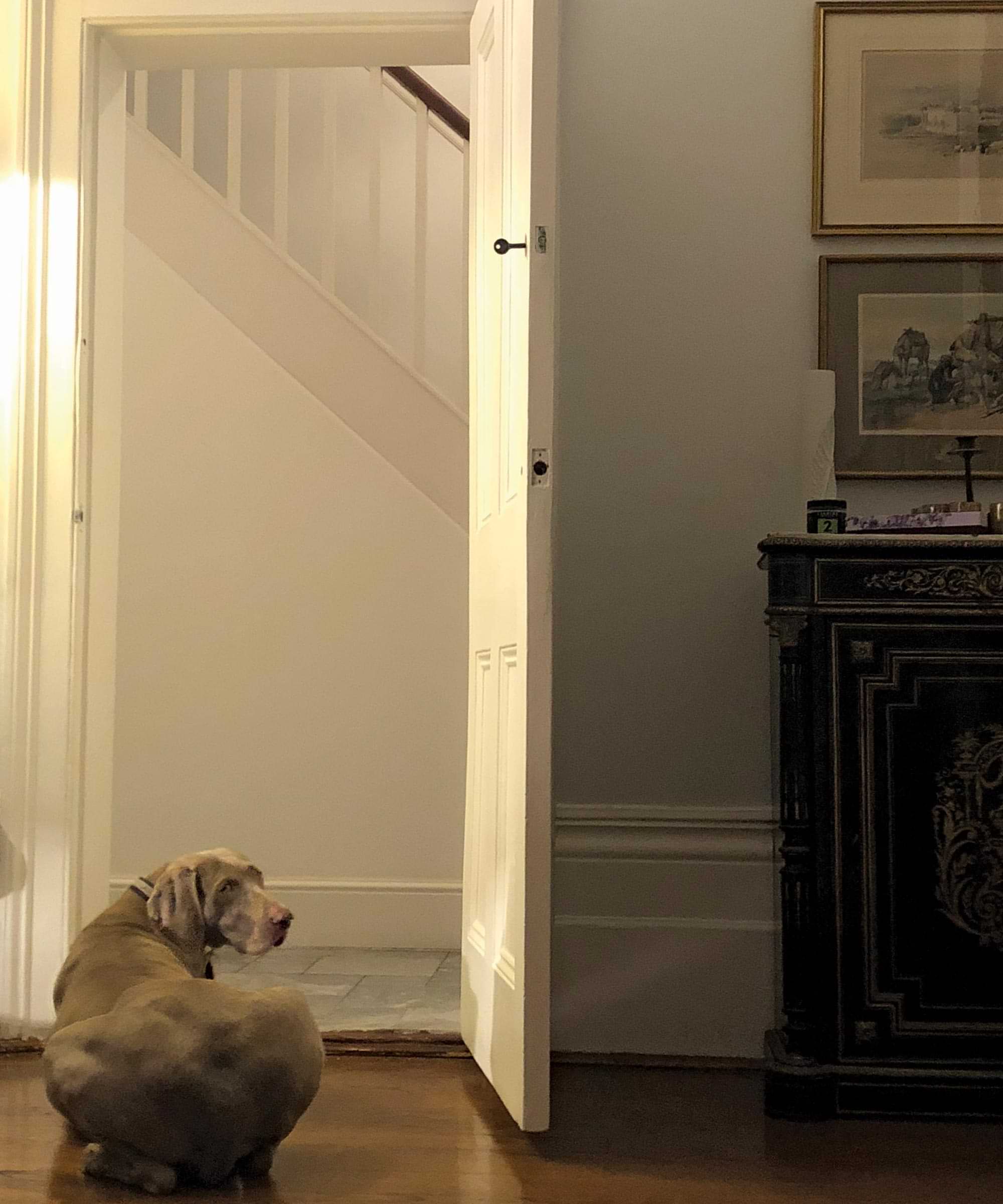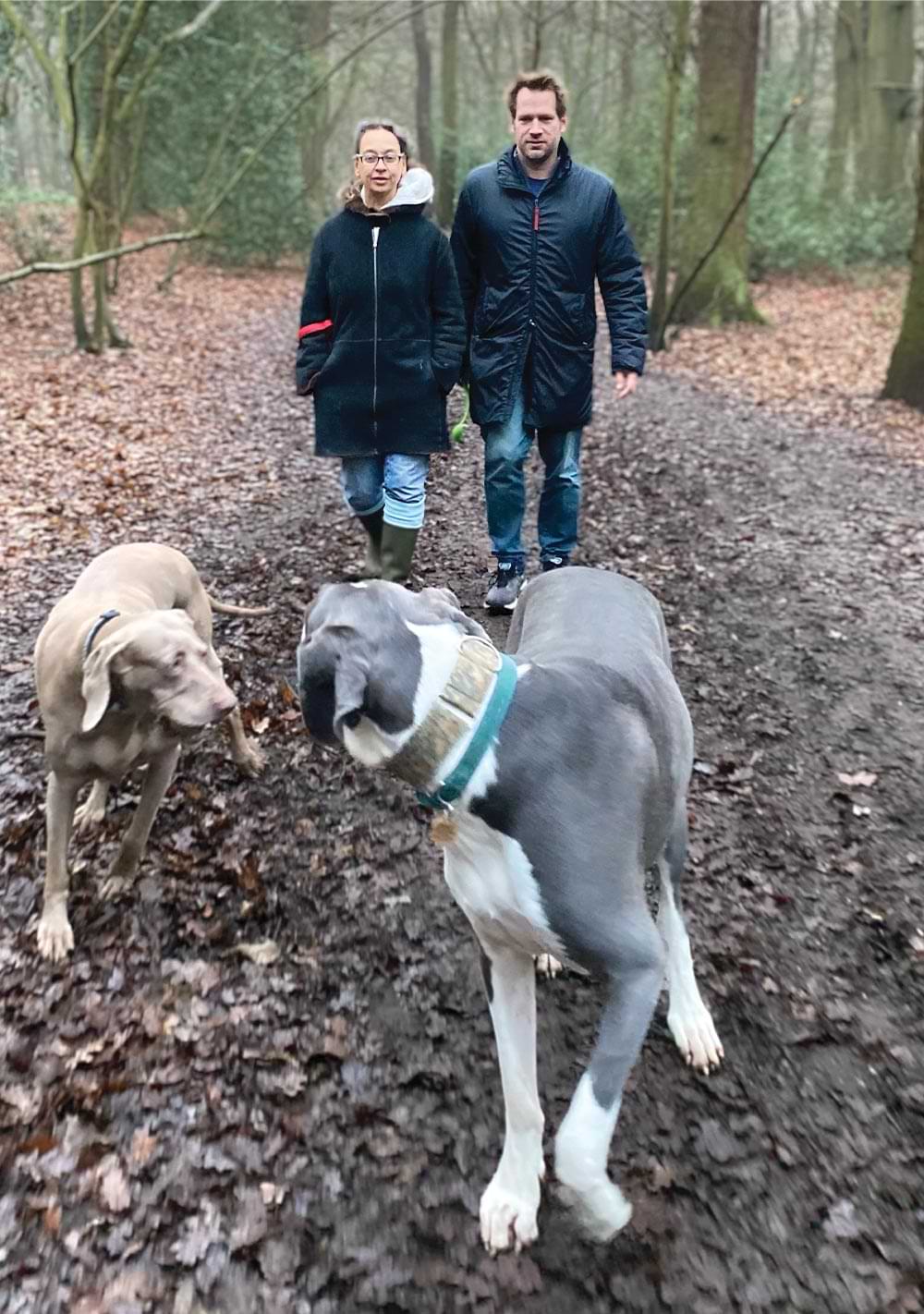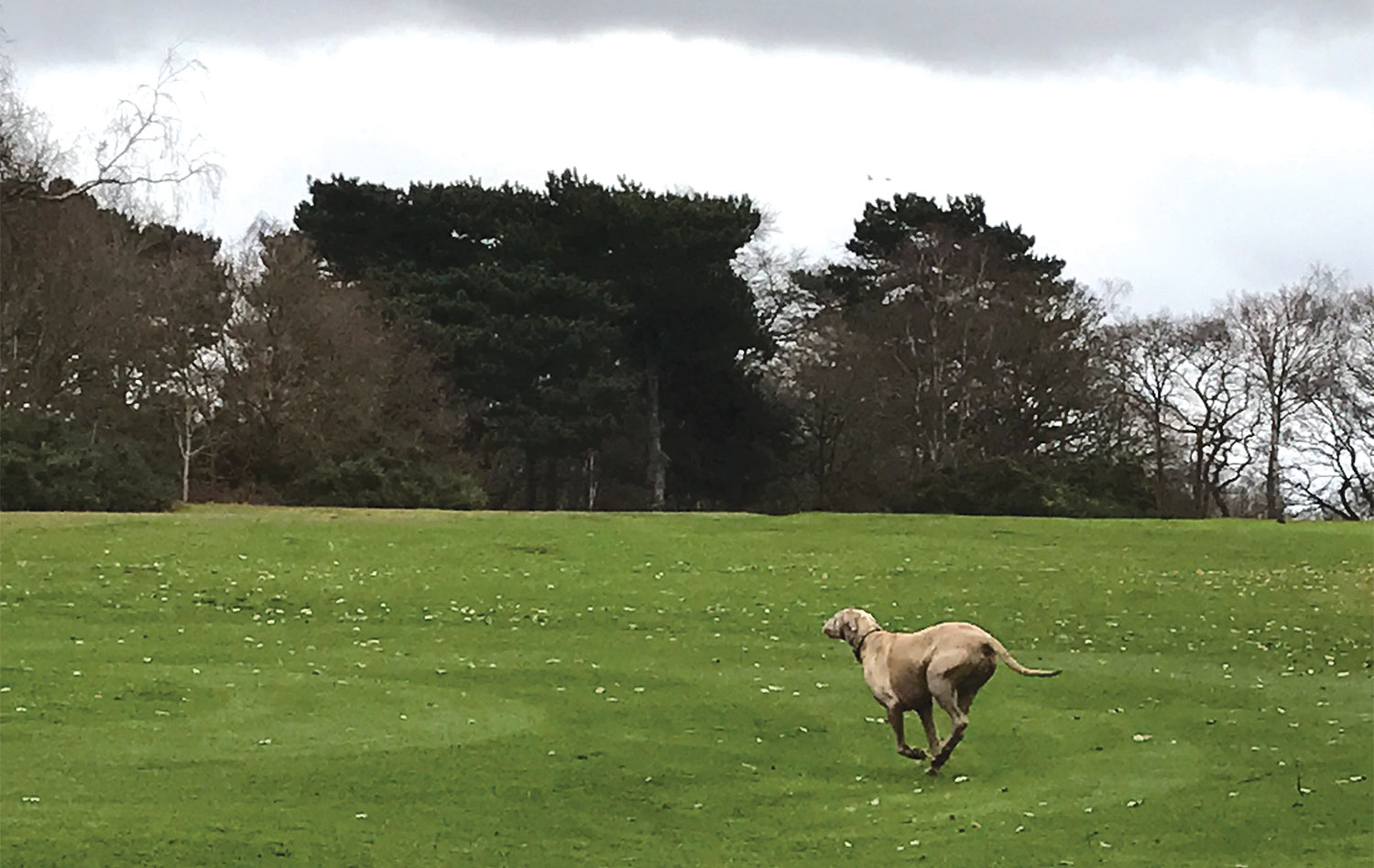Walking Martha
by John Freeman ’96
lready the time has begun to fade, but if I pause in my day I can remember how it felt.
Leaving the house in the gloomy dark, driving to the Common with Martha in the back seat. Watchful, whimpering with impatience. Barking if we took a wrong turn. At the entrance to the park, other dog owners unloaded their animals with tenderness, or long-suffering abasement.
I often saw two men in particular, washing the paws of their spaniels with tiny portable spray guns before lifting their dogs, pasha-like, into the boot of a sensible hatchback.
This was absurd, wasn’t it? Carrying our animals to a wild-seeming but constructed woodland for an hour each day, picking up their excrement with our hands, cleaning them like penitents, as if this tiny reversal in our dominance over nature was a stay against what may one day come.

Walking Martha
by John Freeman ’96
lready the time has begun to fade, but if I pause in my day I can remember how it felt.
Leaving the house in the gloomy dark, driving to the Common with Martha in the back seat. Watchful, whimpering with impatience. Barking if we took a wrong turn. At the entrance to the park, other dog owners unloaded their animals with tenderness, or long-suffering abasement.
I often saw two men in particular, washing the paws of their spaniels with tiny portable spray guns before lifting their dogs, pasha-like, into the boot of a sensible hatchback.
This was absurd, wasn’t it? Carrying our animals to a wild-seeming but constructed woodland for an hour each day, picking up their excrement with our hands, cleaning them like penitents, as if this tiny reversal in our dominance over nature was a stay against what may one day come.
“At the entrance to the park, other dog owners unloaded their animals with tenderness, or long-suffering abasement.”
Martha was a hefty Weimaraner, often close to 100 pounds, and though 11 years old, liked to run. She took off with such power that her paws clawed up divots, her footfall sounding like that of a horse. Some days, we brought along Harry, a 13-year-old Labrador who in spite of his wheezing liked to greet everyone, everywhere, limping over as if the green was not a common but a pub and he was its patron.
On most days in the Common, you see people riding horseback. You see fabulous dogs, too, off lead, because it is allowed and they are used to it. Rare spinonis, majestic mastiffs, sleepy-eyed English setters, Irish wolfhounds, greedy British Labradors, with their stumpy legs and ever-wagging tales, bulldogs so chummy they ought to wear watch caps, churlish dachshunds, always in pairs, and one variation after another of maniacal cockapoos.

“Dogs have been with us many thousands of years, adapting to be a part traveler on our path as a species,” says John Freeman ’96, walking with his partner, Nicole Aragi, and their dogs Martha and Uma. “I often felt, in those terrible first two years of the pandemic, that Martha was our tether to the planet.”
“It can seem facetious in a world which often treats animals as commodities to speak of an emotional bond as equal to that which we share with other humans.”
—John Freeman ’96
Since my partner’s mother walks very slowly, I often carried a ball and wandered ahead so Martha could get some exercise. Martha had a strange notion of sharing. I had to carry two balls. That way, she could have one, and chase the other, while still holding a ball in her powerful jaws.
Meanwhile, behind me, my partner strolled, holding her mother by the arm, talking. I never asked what they spoke of, because as these walks persisted, I realized their conversation was theirs alone, just as — in a peculiar way — what I shared wordlessly with Martha was ours alone, too.
It can seem facetious in a world which often treats animals as commodities to speak of an emotional bond as equal to that which we share with other humans. To deny this, however, shuts down a crucial footbridge to our connection with and responsibility to the planet.
After Martha stopped chasing her ball, she would wander the tree line, following the scent of foxes. She would pick blackberries from bushes, one at a time, with astonishing dexterity. She walked toward and paused at enormous old oak trees. Her favorite tree was in a copse of conifers adjacent to the golf course. Most walks she’d pause there, and then I was allowed one kiss on her big German head. I sometimes thought of Swarthmore on those mornings, walking Martha, pausing, waiting for my partner and her mother. I spent a lot of time in the Crum when I was a student. I didn’t go because it was good for me, or because it was familiar — I grew up in Sacramento, and our nearest tree was a palm. I went by instinct. The trees and their shade and the air called to me. I think I was also lonely. My family was a long way away, and when I went to the Crum I felt, for a brief period, like part of something else, a family I had always been part of.

“I sometimes thought of Swarthmore on those mornings, walking Martha,” says John Freeman ’96.
I was too young then to know a family is who you take care of, that a community can also be the living space which allows that care to occur.
Do I think Martha was sprinting ahead to allow my partner and her mother time alone? No, she was being a dog, she wanted to run. But she did pause and show me things on the Common. Here is water. Here is shade. Here are our neighbors. Some of them were trees. Some were other animals. Birds. They are all equal members of our community, even if they don’t speak. These are basic things, but we live in a world where we often need reminding.
The community of non-human living beings is much bigger, much vaster than us.
Dogs have been with us many thousands of years, adapting to be a part traveler on our path as a species. I often felt, in those terrible first two years of the pandemic, that Martha was our tether to the planet. It’s a lot for an animal to carry, but we rewarded her with toast. And ice cream when she became sick with cancer.
There was a brief, and seemingly miraculous, recovery. She lost the yellowish tinge that had grown in her eyes, her skin. She was faster than ever. But the end came swiftly, and with it, a feeling that the muscles of care she had helped us develop would have to be deployed if we were going to survive the uncertain future.